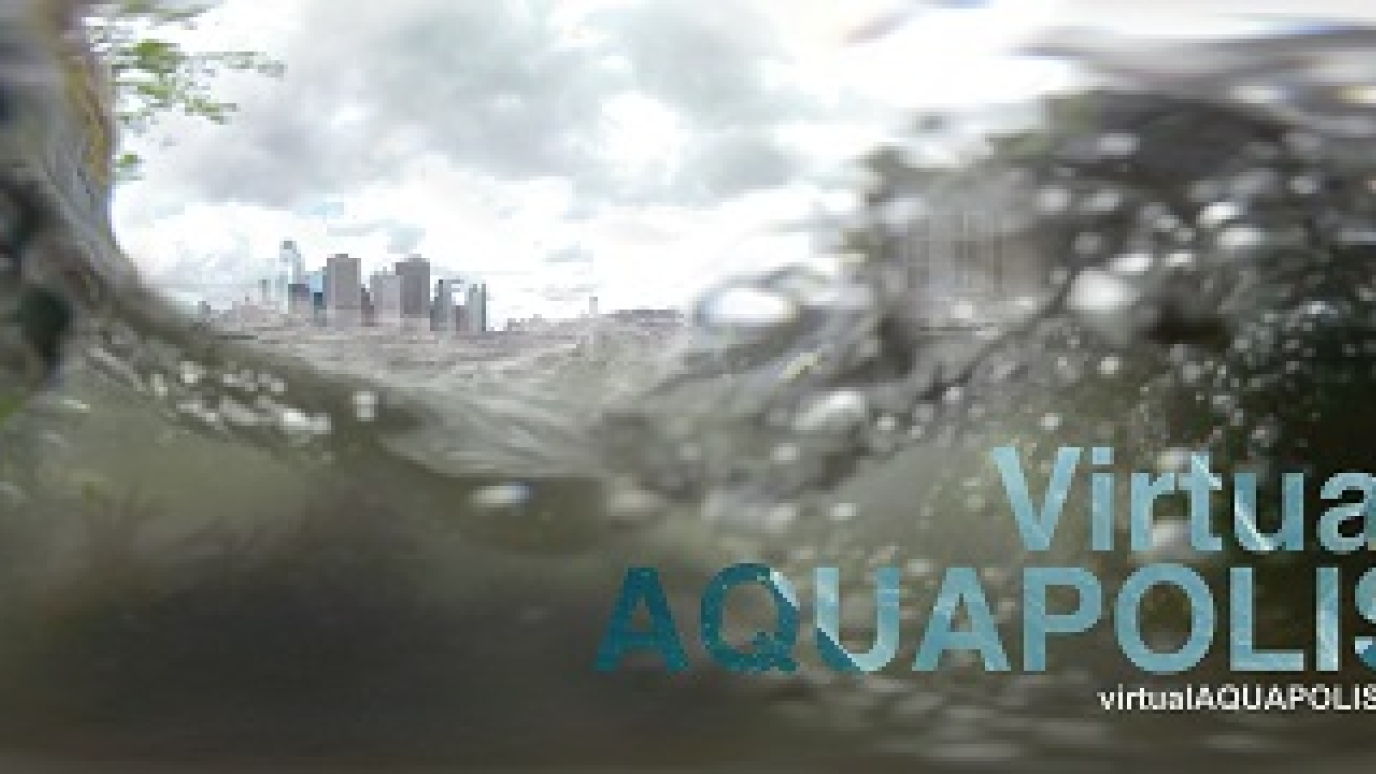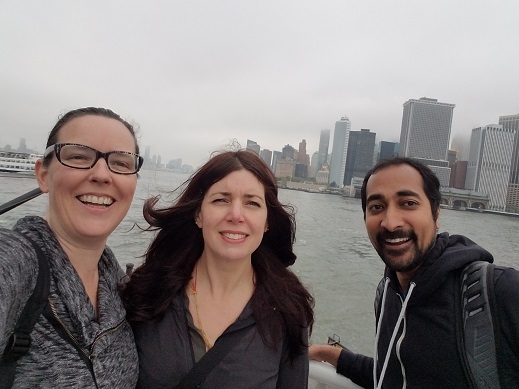
Could you imagine being able to dive into the underwater world of New York City to explore the rich history and evolution of New York Harbor from its life as a resource for indigenous people, through the impacts of Dutch Settlers, past the rise of New York City, and beyond today’s environmental constructs into what the future might hold for this critical resource?
With a recent grant announcement by the National Endowment for the Humanities, this trip moved one step closer to reality – virtual reality that is.
Three SUNY Old Westbury School of Arts and Sciences professors were awarded $30,000 by the NEH to develop a design plan for “Virtual Aquapolis,” an interactive virtual reality documentary about the history of New York Harbor and the interrelationship between the harbor’s ecosystem and the city above.
The $30,000 grant from the NEH Digital Projects for the Public program will enable Assistant Professor Ashok Basawapatna, Associate Professor Laura Chipley and Associate Professor Samara Smith to create a design plan that will incorporate a combination of elements — archival photography, film and audio, animation, underwater video, expert interviews and narration — to explore how human culture, values and practices have altered the harbor’s underwater ecosystems over time, and how the natural world has shaped the city above.
“What makes me most excited about this project is that it demonstrates the best of the marriage between arts and sciences,” said College President Dr. Timothy E. Sams. “The ‘Virtual Aquapolis’ story is being told by faculty who are multimedia artists, documentarians and technology experts. By employing an ever-evolving set of emerging media tools, techniques, and processes, they will be creating a resource that both educates about the history of this important body of water, but also illuminates what its future might be and describes how choices we make today and tomorrow can impact that future.”
With this funding, the SUNY Old Westbury faculty members expect to finalize the “Virtual Aquapolis” design plan by the end of 2021 before moving forward with a future NEH Digital Projects for the Public application along with other fund-raising and project development activities.
As written by the faculty members in the NEH grant proposal, “Virtual Aquapolis” will “examine how discourse around ethics, labor, industry and sustainability, along with a shifting awareness of humans’ reciprocal connection to nature, has informed the harbor’s past and present, and shapes collective visions for the harbor’s future. Users will have a unique opportunity to experience both gradual changes and striking events from beneath the harbor’s surface.”
“What this project brilliantly demonstrates is the synergy that occurs when faculty from different fields and areas of expertise collaborate on projects designed to improve human understanding about - and reflection upon - our relationship to our surroundings,” said Dr. Amanda Frisken, acting dean of the College’s School of Arts and Sciences. “Their skill in communicating complex ideas about the environment and public spaces in creative and engaging ways will empower people to explore, learn, and advocate for better outcomes for our precious waterways.”
The “Virtual Aquapolis” project was one of 17 approved by the NEH through its “Digital Projects for the Public” grant program, which supports projects such as websites, mobile applications, games, and virtual environments that significantly contribute to the public’s engagement with humanities ideas.
About the “Virtual Aquapolis” Principal Investigators
- A resident of New York City, Dr. Ashok Basawapatna conducts research in computational thinking, flow theory, programming languages and human-computer interaction. He earned a Ph.D. in Computer Science and a B.S. in Electrical and Electronics Engineering from the University of Colorado Boulder and a M.S. in Multimedia Engineering from the University of California, Santa Barbara. He is an Assistant Professor in the College’s Mathematics, Computer and Information Sciences Department.
- Professor Laura Chipley is a New York City based artist who uses electronic media, sculpture, and site-specific interventions to tell stories about our evolving relationships with urban spaces and the natural world, and to document the social and environmental impacts of energy extraction and climate change. Her recent works include “The Newtown Creek Armada,” an interactive boat pond created in a New York Superfund site, and “The Appalachian Mountaintop Patrol,” a collaborative, environmental watchdog and multimedia education initiative that works with West Virginia environmental activists to use documentary filmmaking, drones, environmental sensors and surveillance technology to chronicle the effects of Mountaintop Removal coal mining. She received an “A Blade of Grass Fellowship for Socially Engaged Art” in 2015 and earned a M.F.A. in Integrated Media Arts from Hunter College and a B.A. in Film and Electronic Media from Bard College. She is an Associate Professor in the College’s American Studies/Media & Communications Department.
- Documentary media practitioner, Professor Samara Smith, a resident of Brooklyn, New York, creates site-specific, mobile projects in and about public space. Her work utilizes interactive and mobile strategies–such as, locative games, SMS messaging, soundwalks and augmented reality–to invite the “people formerly known as the audience” to actively explore common urban spaces. She has designed site-specific projects for downtown Greensboro, NC; Westwood, LA; Manhattan’s garment district, downtown Brooklyn, Midtown Manhattan, NY Harbor's Governor's Island, and the Queens Museum’s Panorama. Her work has been featured at Open Engagement, the Conflux Festival, Under the Subway International Video Art Night, and Fabric of Freedom and exhibited at the Hammer Museum, Museum of the Moving Image, New York Transit Museum, Open Source Gallery, Elsewhere Museum and Hunter College. She is an Associate Professor in the College’s American Studies/Media & Communications Department.

